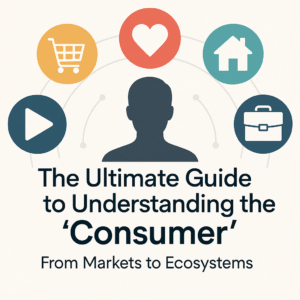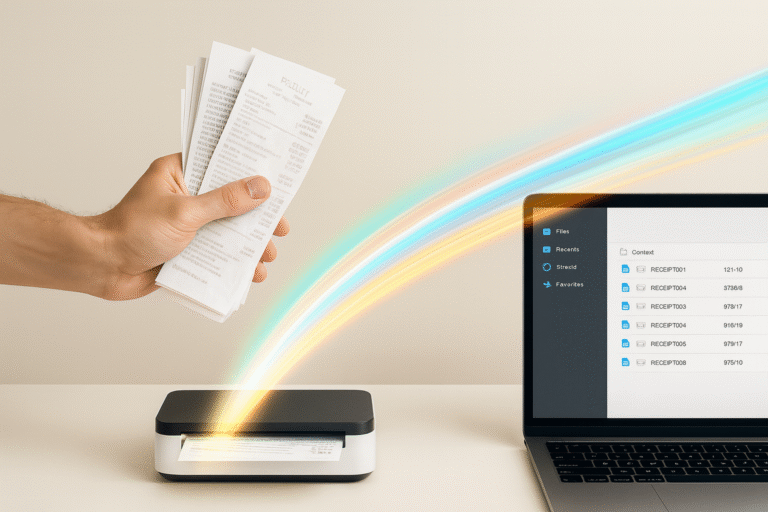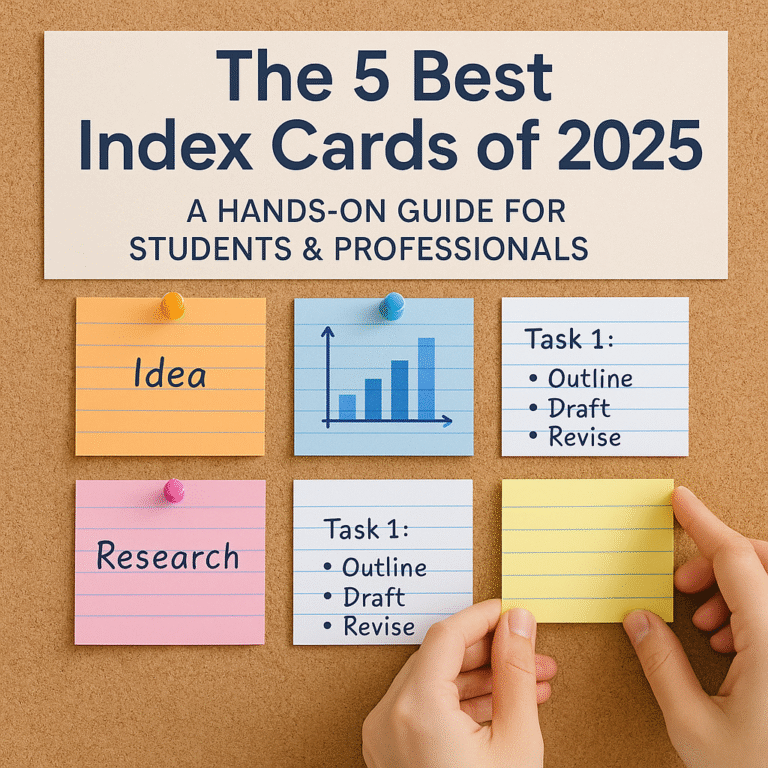The Ultimate Guide to Understanding the “Consumer”: From Markets to Ecosystems
The word “consumer” is one we hear every day. It’s in news headlines, marketing campaigns, and even biology textbooks. But what does it truly mean? The concept is far richer and more complex than you might think, spanning economics, law, and the natural sciences. This guide will explore every facet of the consumer, empowering you with the knowledge to be a smarter shopper, a more informed citizen, and have a deeper understanding of the world around you.
What is a Consumer? The Foundational Definition
At its core, a consumer is an individual or group that purchases or uses goods and services to satisfy their needs and wants. They are the final link in the economic chain of production. Without consumers, there would be no demand, and without demand, there would be no reason to produce anything. Every time you buy groceries, stream a movie, get a haircut, or fill your car with gas, you are acting as a consumer.
A simple way to think about it: If a product isn’t being made for a business to use in *its* operations (like a factory buying raw steel), it’s likely being made for a consumer.
Consumer vs. Customer: Is There a Difference?
While often used interchangeably, there’s a subtle but important distinction. A customer is someone who *purchases* a good or service. A consumer is someone who *uses* it. They can be the same person, but not always.
- Example 1 (Same person): You buy and eat a sandwich. You are both the customer and the consumer.
- Example 2 (Different people): A parent buys baby food. The parent is the customer, but the baby is the consumer.
This distinction is crucial for businesses. They market to the customer (the parent) but must design the product for the consumer (the baby).
Decoding Consumer Market Behavior
Why do you choose one brand of smartphone over another? What makes you decide to eat at a certain restaurant? These questions are the focus of consumer market behavior, the study of how individuals, groups, and organizations select, buy, use, and dispose of goods, services, ideas, or experiences to satisfy their needs and desires.
Understanding this behavior is the holy grail for marketers, economists, and public policymakers. It’s not random; it’s influenced by a predictable set of factors.
Key Factors Influencing Your Buying Decisions
1. Psychological Factors
These are the internal drivers of your actions.
- Motivation: What is the underlying need driving the purchase? Is it a basic need for survival (food), a need for safety (a reliable car), or a need for self-esteem (a luxury brand)?
- Perception: How you interpret information about a product. Two people can see the same advertisement and come away with completely different perceptions.
- Learning: Your behavior changes based on past experiences. A good experience with a brand makes you more likely to buy from them again.
- Beliefs and Attitudes: Your ingrained feelings and opinions about a brand, a product category, or even about shopping itself.
2. Personal Factors
These are characteristics unique to you as an individual.
- Age and Life-Cycle Stage: A college student’s needs are vastly different from a retiree’s.
- Occupation: A construction worker and a software engineer buy different types of clothing and tools.
- Economic Situation: Your income and savings directly impact your purchasing power and choices.
- Lifestyle: Your activities, interests, and opinions (AIOs) shape your consumption patterns. Are you an outdoor adventurer or a homebody?
3. Social Factors
Humans are social creatures, and our decisions are heavily influenced by others.
- Family: The most important consumer-buying organization in society. Your family’s habits often shape your own.
- Reference Groups: Groups you belong to or aspire to join—friends, colleagues, celebrities—that influence your attitudes and behavior.
- Roles and Status: The positions you hold in different groups (e.g., manager, parent, team captain) come with expected purchasing behaviors.
The Consumer Decision-Making Process
Most significant purchases follow a clear, five-step process. Understanding this can make you a more mindful consumer.
| Step | Description | Real-World Example (Buying a Laptop) |
|---|---|---|
| 1. Problem Recognition | You realize a difference between your current state and your desired state. A need or want arises. | Your old laptop is slow, the battery dies quickly, and it can’t run the software you need for work. |
| 2. Information Search | You look for information about potential solutions. This can be internal (memory) or external (friends, reviews, ads). | You ask tech-savvy friends, read online reviews, compare models on manufacturer websites, and watch video reviews. |
| 3. Evaluation of Alternatives | You use the information to evaluate different brands and models in your “choice set,” weighing pros and cons. | You compare Brand A vs. Brand B based on price, processing power, screen size, battery life, and warranty. |
| 4. Purchase Decision | You make the final choice and complete the purchase. This step can still be influenced by factors like store experience or a last-minute sale. | You decide on Brand A, Model X because it offers the best balance of features for your budget. You buy it online. |
| 5. Post-Purchase Behavior | After the purchase, you evaluate your decision. Are you satisfied or dissatisfied? This influences future purchases and word-of-mouth. | The laptop works great! You’re very satisfied and recommend it to a colleague. (Or, it has issues, and you experience buyer’s remorse). |
What is Consumer Reports? Your Unbiased Ally
In a world saturated with advertising and sponsored “reviews,” how can a consumer find the truth? For millions of Americans, the answer is Consumer Reports (CR).
Consumer Reports is an independent, nonprofit member organization that works side-by-side with consumers for truth, transparency, and fairness in the marketplace. It is not a government agency; it’s funded by its members through subscriptions and donations.
The Core Principles of Consumer Reports:
- No Outside Advertising: CR accepts no advertising in its magazine or on its website to avoid any potential conflict of interest.
- Anonymous Purchasing: They buy all the products they test off the shelf, just like a regular consumer. They never accept free samples from manufacturers.
- Rigorous, Scientific Testing: Products are tested in their own labs by experts using objective criteria. Cars are driven thousands of miles, washing machines are run for hundreds of cycles, and phone screens are tested for durability.
- Fierce Advocacy: CR uses its findings to advocate for stronger consumer protection laws and safer products.
When you see a rating from Consumer Reports, you can trust that it’s based on unbiased, scientific data designed with one goal: to help you make a better choice. They are a prime example of an organization that builds its entire reputation on trustworthiness and expertise.
Know Your Rights: A Primer on U.S. Consumer Laws
Being a consumer isn’t just about buying things; it’s also about having rights that protect you from unsafe products, deceptive practices, and unfair treatment. In the United States, a robust framework of federal and state laws exists to safeguard consumers.
The “Consumer Bill of Rights,” introduced by President John F. Kennedy in 1962, laid the foundation for modern consumer protection, emphasizing the right to safety, the right to be informed, the right to choose, and the right to be heard.
Key Federal Agencies and Laws
- Federal Trade Commission (FTC): This is the nation’s primary consumer protection agency. It works to stop unfair, deceptive, or fraudulent practices in the marketplace. The FTC enforces antitrust laws and protects consumers from things like identity theft, deceptive advertising, and scams.
- Consumer Financial Protection Bureau (CFPB): Created after the 2008 financial crisis, the CFPB is a watchdog for consumer financial products like mortgages, credit cards, and student loans. They ensure you are treated fairly by banks and lenders.
- Consumer Product Safety Commission (CPSC): The CPSC’s job is to protect the public from unreasonable risks of injury or death from thousands of types of consumer products. They issue recalls for dangerous products, from faulty cribs to hazardous electronics.
- Food and Drug Administration (FDA): The FDA ensures the safety and efficacy of our food supply, drugs, medical devices, and cosmetics.
Many other laws, like the Fair Credit Reporting Act (ensuring accuracy in your credit report) and the Truth in Lending Act (requiring clear disclosure of loan terms), provide specific protections. Additionally, most states have their own “Lemon Laws” that provide remedies for consumers who buy cars or other goods that repeatedly fail to meet standards of quality.
The Scientific View: Consumers in an Ecosystem
Shifting gears from the marketplace to the natural world, the term “consumer” has a vital and completely different meaning in science, specifically in biology and ecology.
In science, a consumer is an organism that gets its energy by feeding on other organisms. Also known as heterotrophs (from the Greek “hetero” for other and “troph” for nourishment), consumers are unable to produce their own food through photosynthesis, unlike plants (which are called producers or autotrophs).
The Tiers of the Food Chain
Consumers are categorized into different levels based on what they eat. These levels form a food chain or food web.
- Primary Consumers: These are the herbivores. They occupy the first consumer level and get their energy by eating producers (plants). Examples include a rabbit eating grass or a grasshopper eating a leaf.
- Secondary Consumers: These organisms eat primary consumers. They can be carnivores (meat-eaters) or omnivores (eating both plants and animals). A fox that eats a rabbit is a secondary consumer.
- Tertiary Consumers: These consumers eat secondary consumers. They are often apex predators at the top of the food chain. An eagle that eats a fox would be a tertiary consumer.
Humans, as omnivores, can act as consumers at multiple levels. When you eat a salad, you are a primary consumer. When you eat a hamburger (from a cow, a primary consumer), you are a secondary consumer.
This flow of energy from producers to a series of consumers is fundamental to the structure and function of every ecosystem on Earth.
The Power of Consumer Awareness
Finally, we arrive at what might be the most important concept: consumer awareness. This theme ties together everything we’ve discussed. Consumer awareness means making decisions with a full understanding of your choices, your rights, and your impact.
Why is Awareness So Critical?
- Maximizing Your Budget: An aware consumer compares prices, understands value, and avoids impulse buys, making their money go further.
- Protection from Exploitation: Knowledge of your rights and common scams is your best defense against fraudulent sellers and deceptive marketing.
- Driving Market Quality: When consumers demand better, safer, and more reliable products (often guided by resources like Consumer Reports), companies are forced to improve.
- Promoting Ethical and Sustainable Practices: An aware consumer might choose to support companies that use sustainable materials, pay fair wages, or have ethical supply chains. Your purchasing power becomes a vote for the kind of world you want to live in.
How to Become a More Aware Consumer:
- Do Your Homework: Before a major purchase, spend time in the “Information Search” phase. Read reviews from multiple, unbiased sources.
- Read the Fine Print: Understand warranties, return policies, and the terms and conditions of any contract you sign.
- Question “Too Good to Be True”: Be skeptical of high-pressure sales tactics and offers that seem unbelievable.
- Know Your Rights: Familiarize yourself with the roles of agencies like the FTC and CFPB.
- Think Beyond the Price Tag: Consider the long-term cost, the environmental impact, and the ethics of the company you’re buying from.
Frequently Asked Questions (FAQ)
A customer is the one who *buys* the product, while a consumer is the one who *uses* it. A dad buying diapers is the customer; his baby is the consumer. Often they are the same person, but not always.
You can visit their website, ConsumerReports.org. Much of their content, especially detailed ratings and recommendations, requires a paid membership, which funds their testing and advocacy work.
For most issues involving fraud, deception, or unfair business practices, the best place to start is the Federal Trade Commission (FTC) at ReportFraud.ftc.gov. For financial products, contact the Consumer Financial Protection Bureau (CFPB). You should also consider filing a complaint with your state’s Attorney General.
Humans are omnivores, so we can be all three! When we eat plants (like a salad), we are primary consumers. When we eat herbivores (like a cow), we are secondary consumers. When we eat other carnivores (like certain types of large fish that eat smaller fish), we can be tertiary or even quaternary consumers.
Related Learning Resources
Examples of Passive Leisure
Explore relaxing leisure activities that support well-being and balance.
Why Prioritize Goals?
Learn how short, mid, and long-term goals shape productivity.
Build Effective Task Lists
Understand how to break down goals into actionable steps.
Service Marketing Basics
Discover core principles of marketing intangible services.
Forex Mistakes from Inexperience
See how lack of experience in forex trading leads to costly errors.




